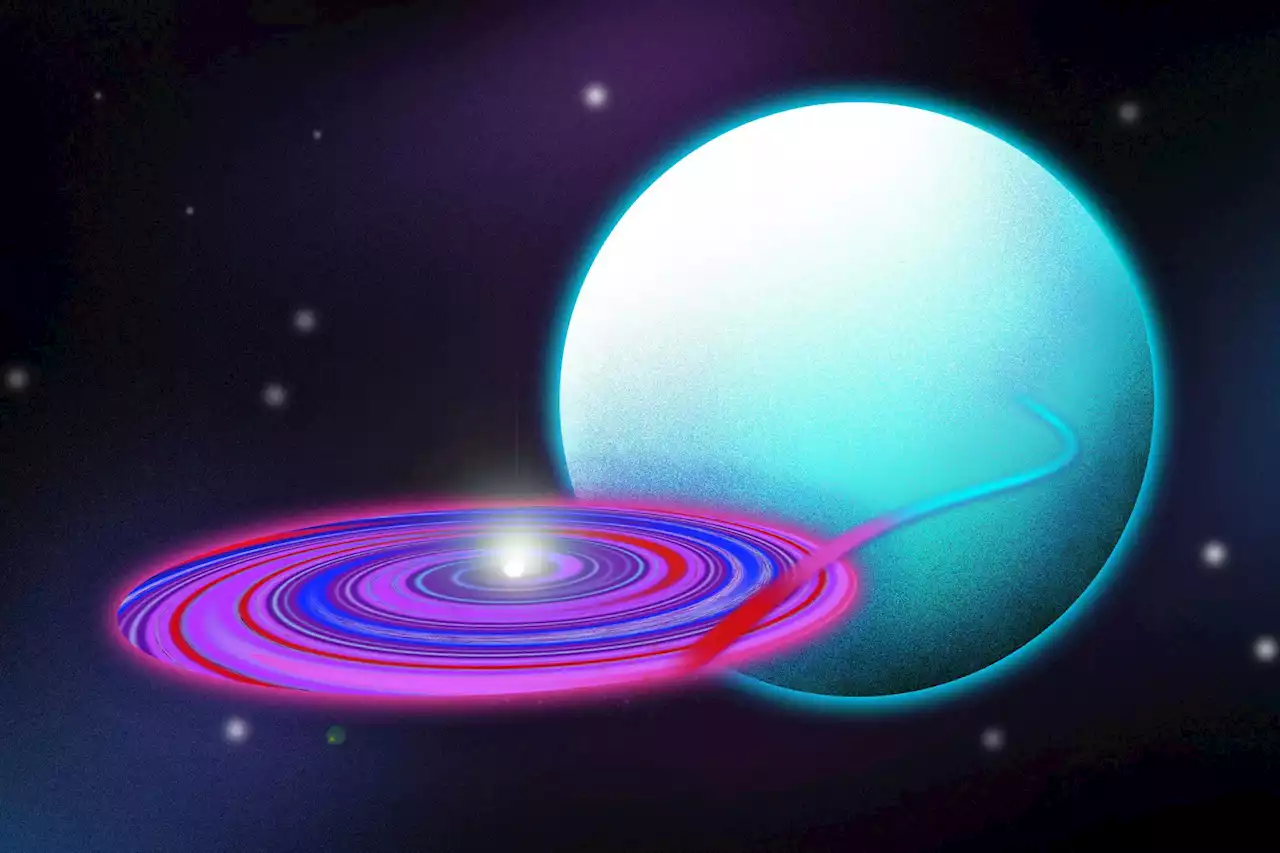The 2D map of this “disk wind” may reveal clues to galaxy formation. MIT astronomers have successfully mapped the vertical shape and structure of disk winds in the Hercules X-1 system, marking the first time such winds have been observed in two dimensions. The team took advantage of the neutron sta
MIT astronomers mapped the “disk winds” associated with the accretion disk around Hercules X-1, a system in which a neutron star is drawing material away from a sun-like star, represented as the teal sphere. The findings may offer clues to how supermassive black holes shape entire galaxies. Credit: Jose-Luis Olivares, MIT. Based on an image of Hercules X-1 by D.
“In the future, we could map disk winds in a range of objects and determine how wind properties change, for instance, with the mass of a black hole, or with how much material it is accreting,” says Peter Kosec, a postdoc in MIT’s Kavli Institute for Astrophysics and Space Research. “That will help determine how black holes and neutron stars influence our universe.
In 2020, he and his colleagues realized that one binary system could offer a wider view of disk winds. Hercules X-1 has stood out from most known X-ray binaries for its warped accretion disk, which wobbles as it rotates around the system’s central neutron star. By measuring X-ray emissions and the absorption lines as the disk wobbled and rotated over time, the researchers could scan properties such as the temperature and density of winds at various heights with respect to its disk and construct a two-dimensional map of the wind’s vertical structure.
United States Latest News, United States Headlines
Similar News:You can also read news stories similar to this one that we have collected from other news sources.
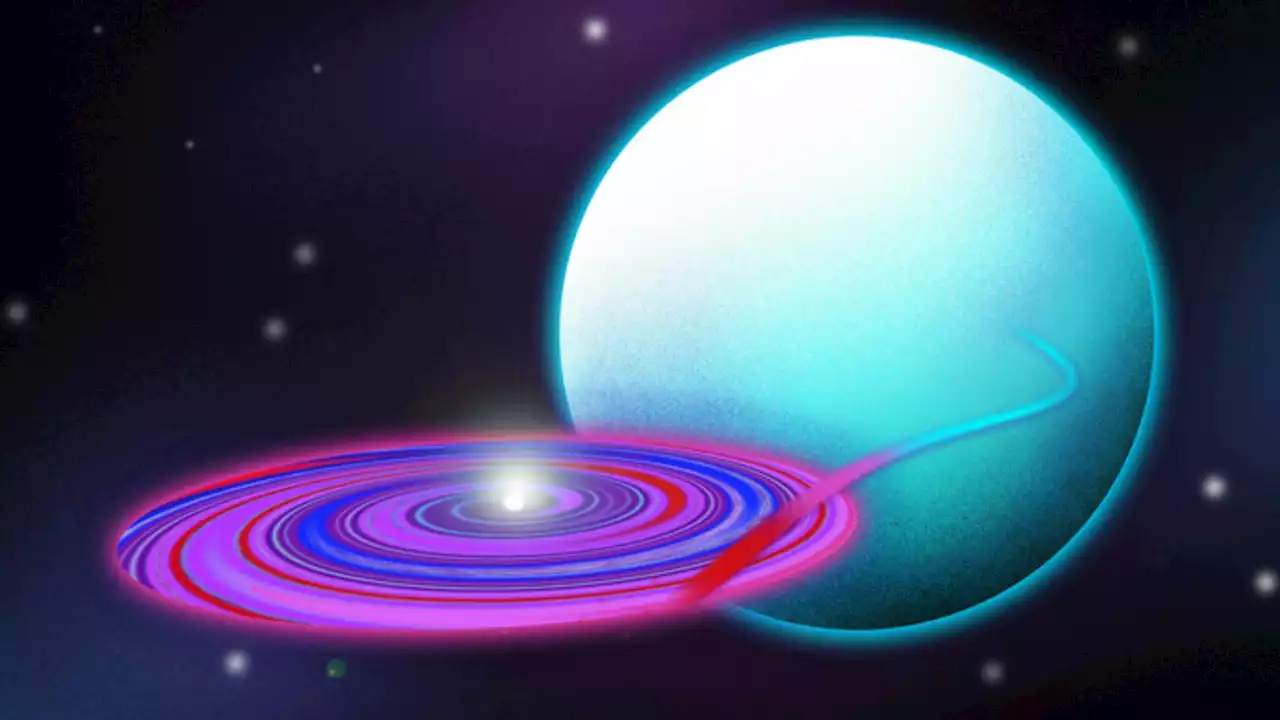 Astronomers create 2D-map of 'disk winds' in a distant neutron star systemMIT astronomers have observed a wider swath of disk winds in the binary system Hercules X-1 for the first time.
Astronomers create 2D-map of 'disk winds' in a distant neutron star systemMIT astronomers have observed a wider swath of disk winds in the binary system Hercules X-1 for the first time.
Read more »
 The Big Bang’s Afterglow Reveals Invisible Cosmic Structures“The universe is really a shadow theater in which the galaxies are the protagonists, and the CMB is the backlight.” Via QuantaMagazine
The Big Bang’s Afterglow Reveals Invisible Cosmic Structures“The universe is really a shadow theater in which the galaxies are the protagonists, and the CMB is the backlight.” Via QuantaMagazine
Read more »
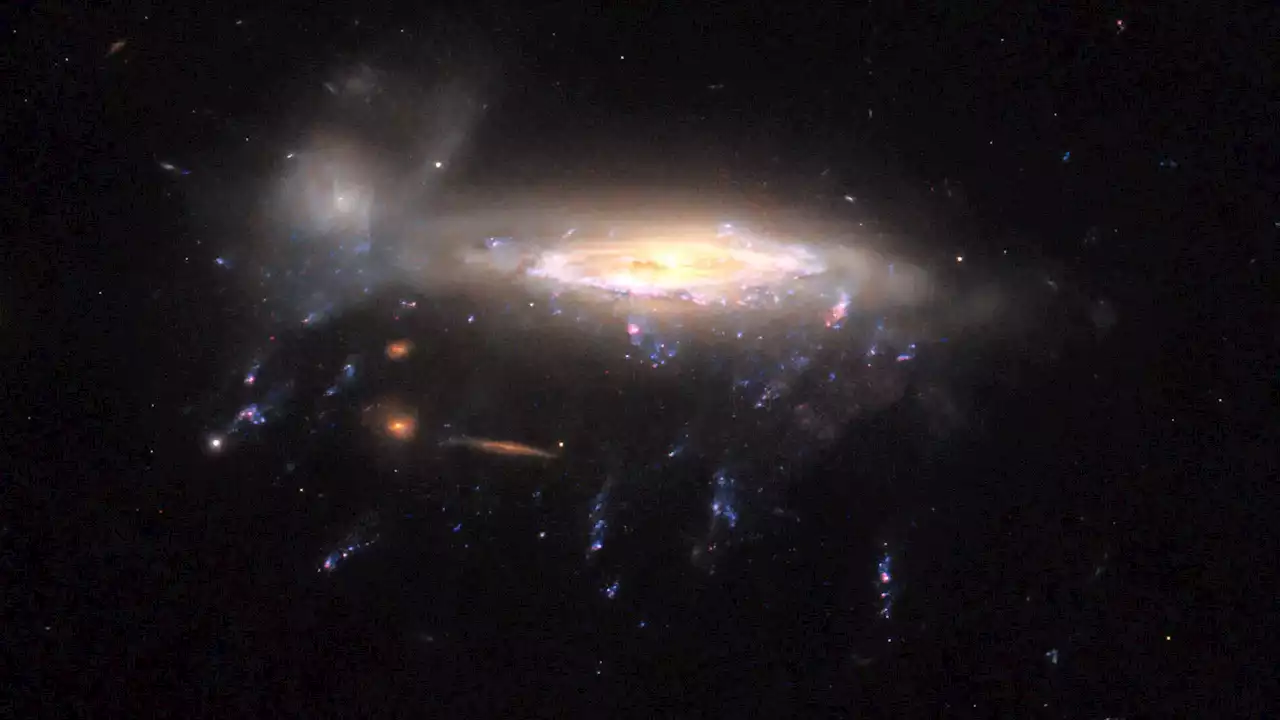 Cosmic Tentacles: The Unexpected Star Factory in Jellyfish GalaxiesThe Hubble Space Telescope captured an image of JO204, a 'jellyfish galaxy' characterized by bright gas tendrils resembling jellyfish tentacles. These galaxies experience ram pressure stripping, which causes their loosely bound gas to collapse and form new stars in their tendrils. Here we see JO2
Cosmic Tentacles: The Unexpected Star Factory in Jellyfish GalaxiesThe Hubble Space Telescope captured an image of JO204, a 'jellyfish galaxy' characterized by bright gas tendrils resembling jellyfish tentacles. These galaxies experience ram pressure stripping, which causes their loosely bound gas to collapse and form new stars in their tendrils. Here we see JO2
Read more »
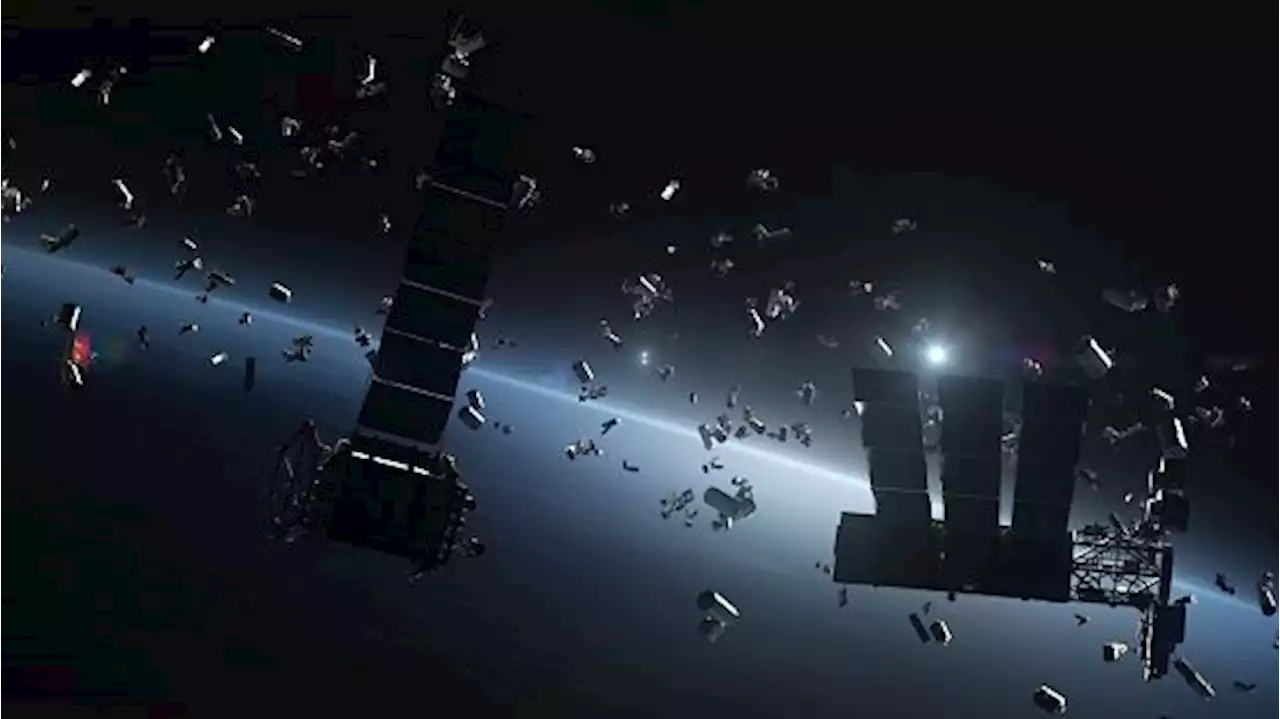 Cosmic 'highway code' could help combat the space junk threatRobert Lea is a science journalist in the U.K. whose articles have been published in Physics World, New Scientist, Astronomy Magazine, All About Space, Newsweek and ZME Science. He also writes about science communication for Elsevier and the European Journal of Physics. Rob holds a bachelor of science degree in physics and astronomy from the U.K.’s Open University. Follow him on Twitter sciencef1rst.
Cosmic 'highway code' could help combat the space junk threatRobert Lea is a science journalist in the U.K. whose articles have been published in Physics World, New Scientist, Astronomy Magazine, All About Space, Newsweek and ZME Science. He also writes about science communication for Elsevier and the European Journal of Physics. Rob holds a bachelor of science degree in physics and astronomy from the U.K.’s Open University. Follow him on Twitter sciencef1rst.
Read more »
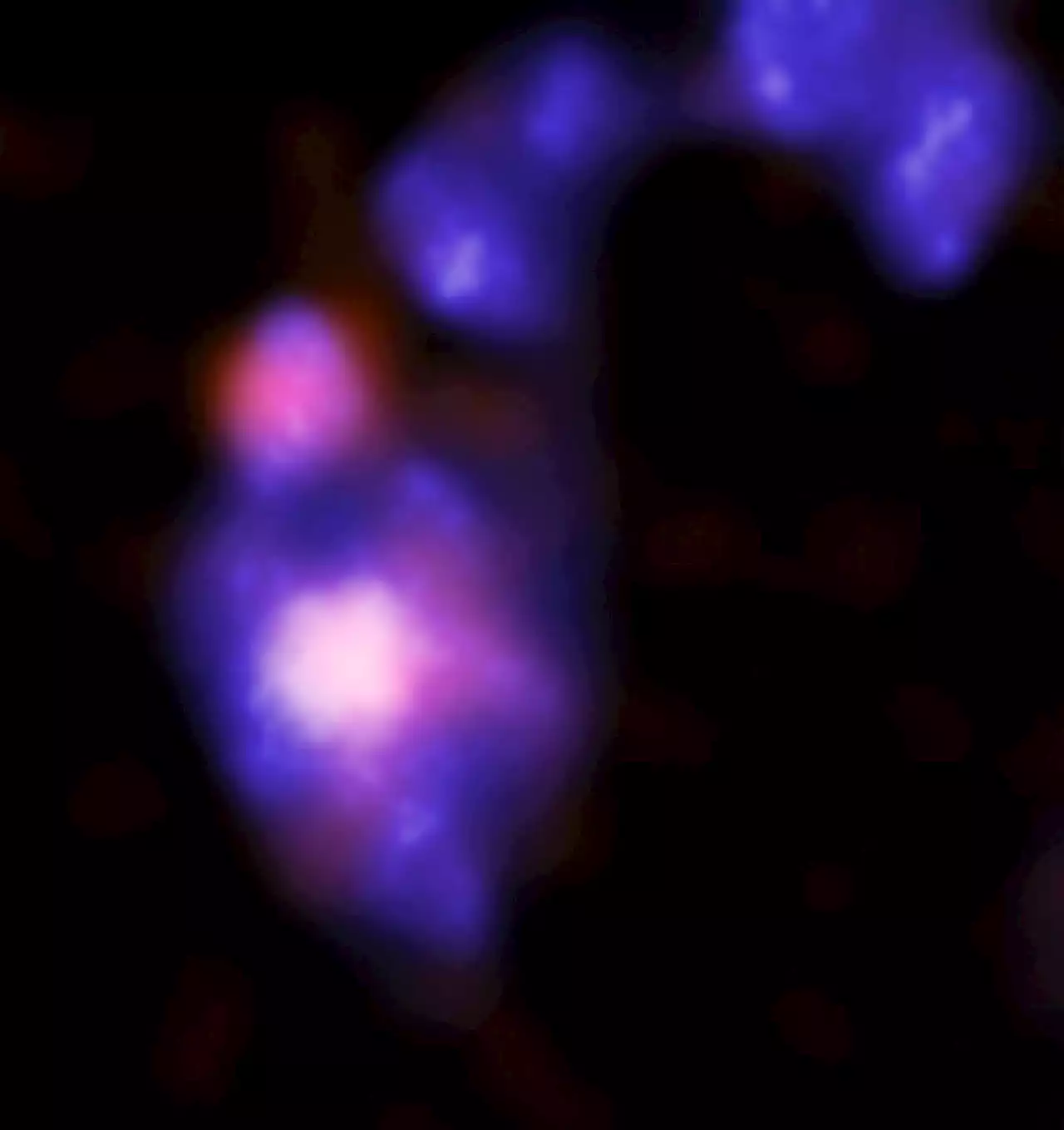 Cosmic Collisions: Dwarf Galaxies With Giant Black Holes Unveil Early Universe SecretsAstronomers discovered the first evidence of giant black holes in colliding dwarf galaxies, offering important insights into early universe galaxy formation and black hole growth. The findings were made using NASA's Chandra X-ray Observatory, WISE, and CFHT data. Astronomers have discovered the f
Cosmic Collisions: Dwarf Galaxies With Giant Black Holes Unveil Early Universe SecretsAstronomers discovered the first evidence of giant black holes in colliding dwarf galaxies, offering important insights into early universe galaxy formation and black hole growth. The findings were made using NASA's Chandra X-ray Observatory, WISE, and CFHT data. Astronomers have discovered the f
Read more »
 Strange Life Forms Could Be Hiding in Cosmic 'Computational Zones' Says New StudyAstronomers are currently searching for signs of life in the 'habitable zones' of nearby stars, which is defined as the band around a star where liquid water can potentially exist.
Strange Life Forms Could Be Hiding in Cosmic 'Computational Zones' Says New StudyAstronomers are currently searching for signs of life in the 'habitable zones' of nearby stars, which is defined as the band around a star where liquid water can potentially exist.
Read more »
